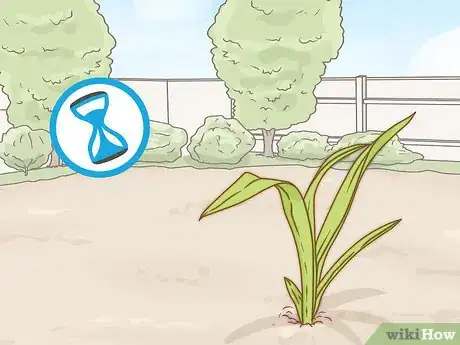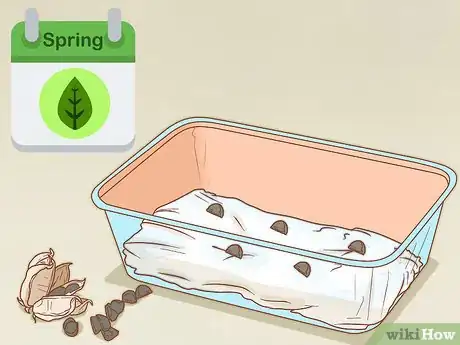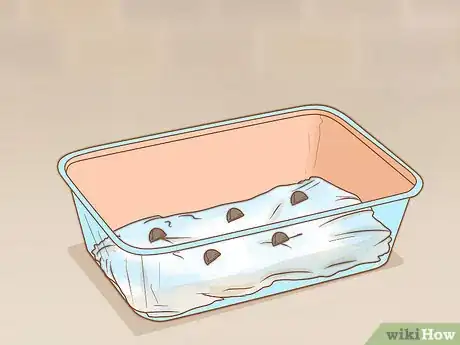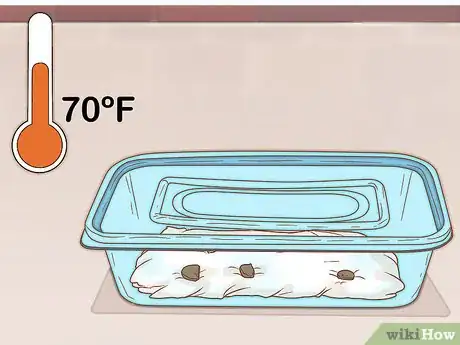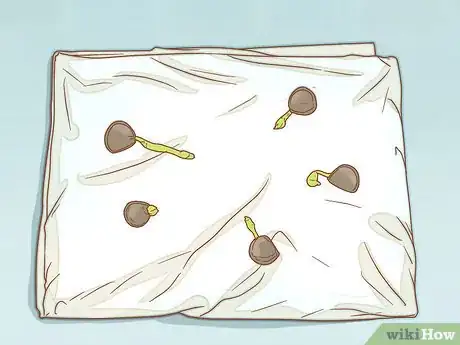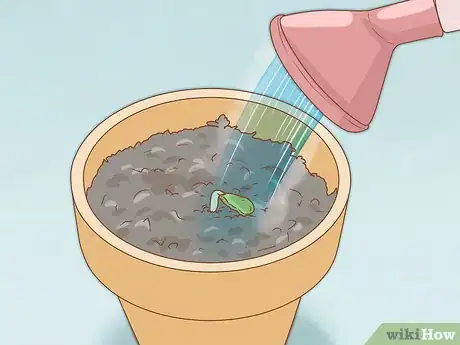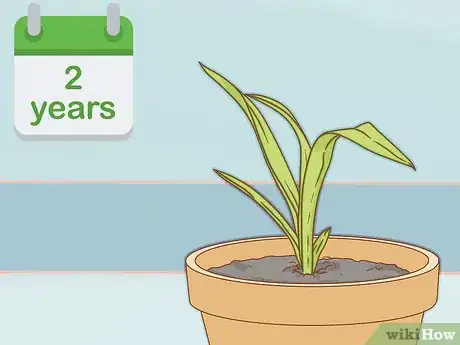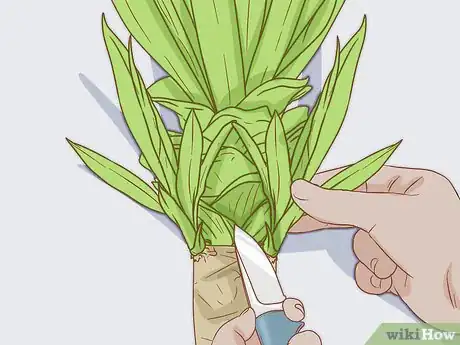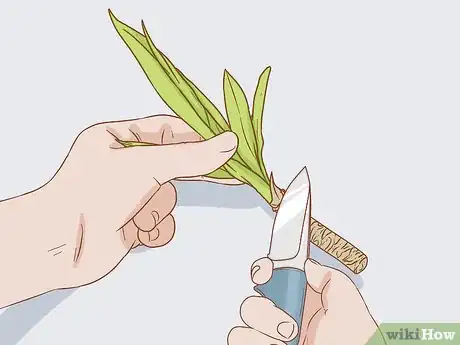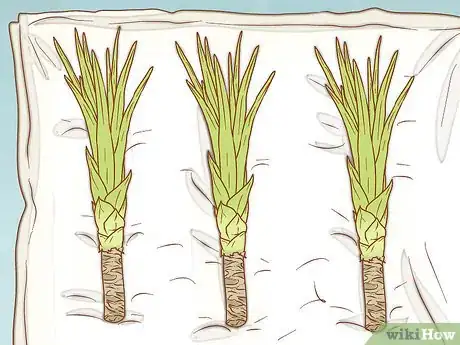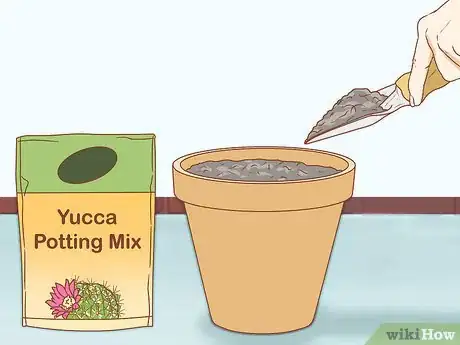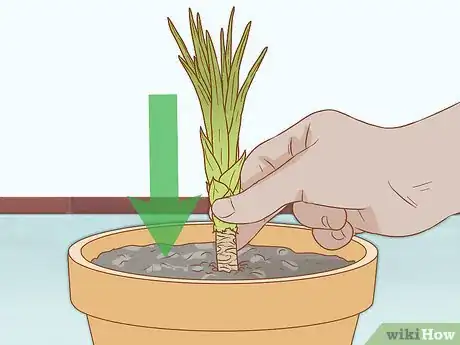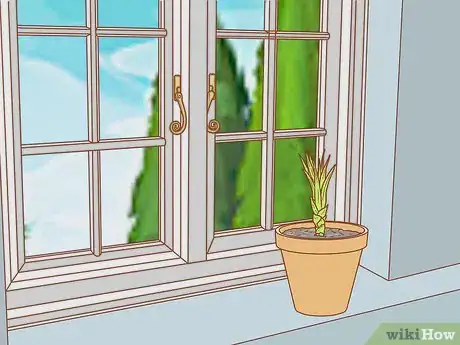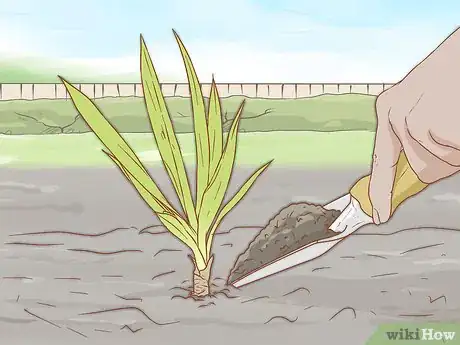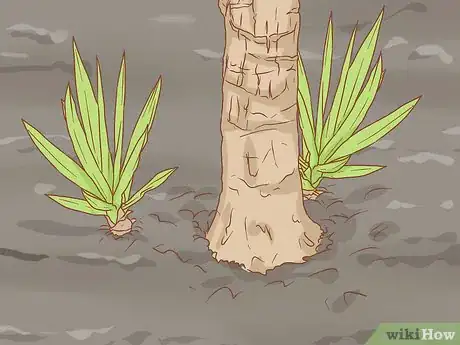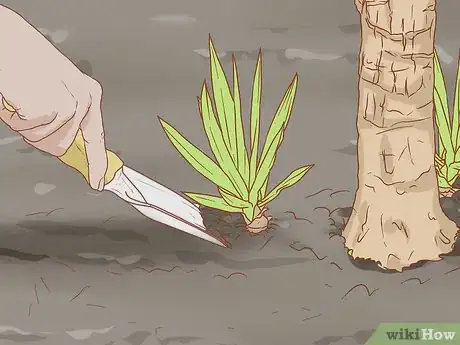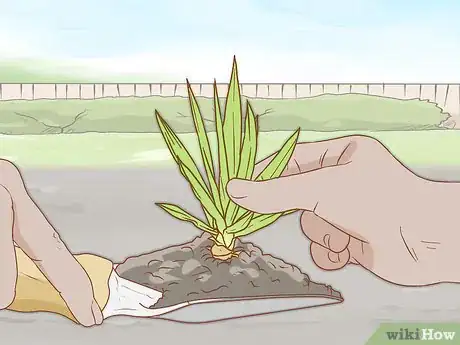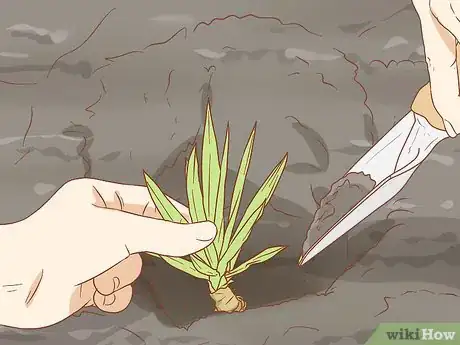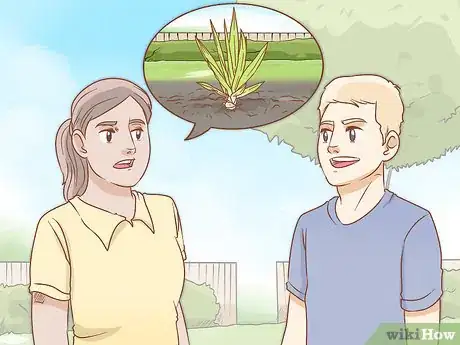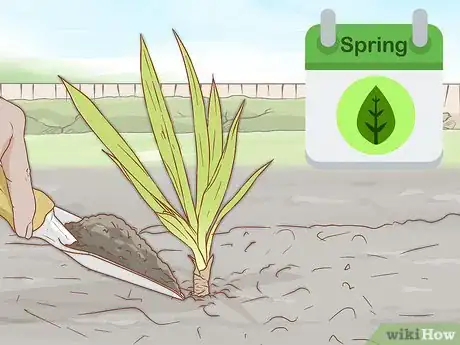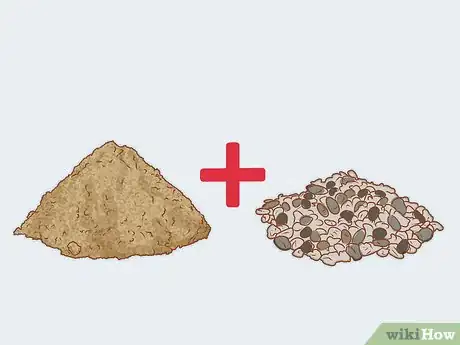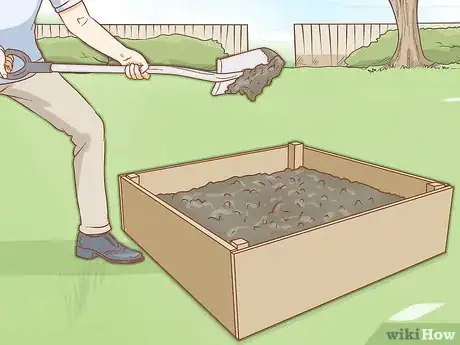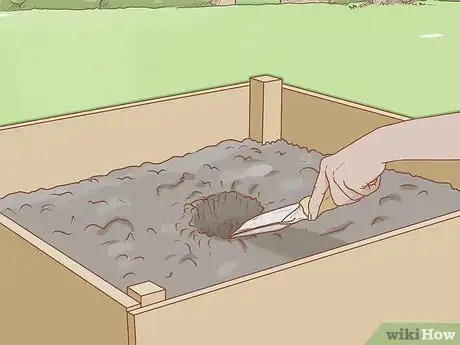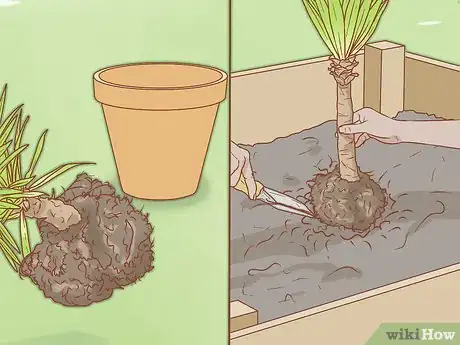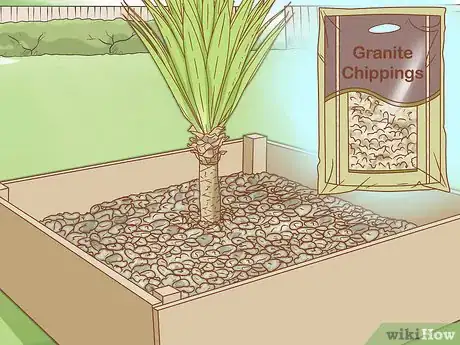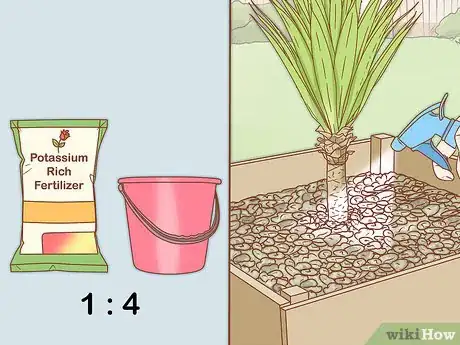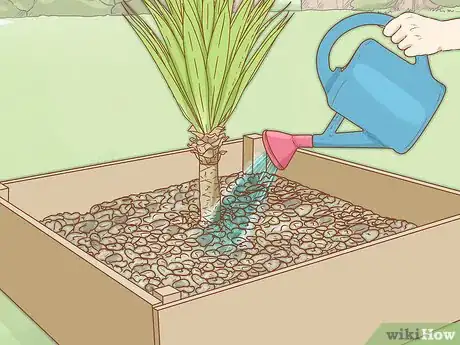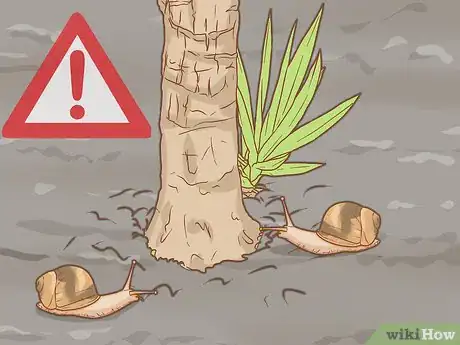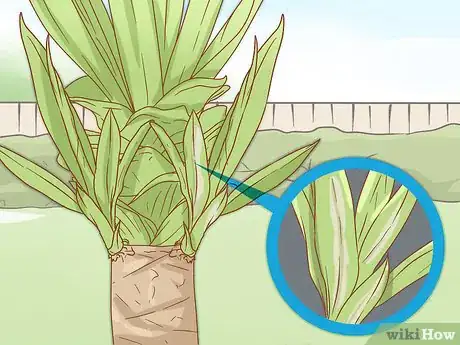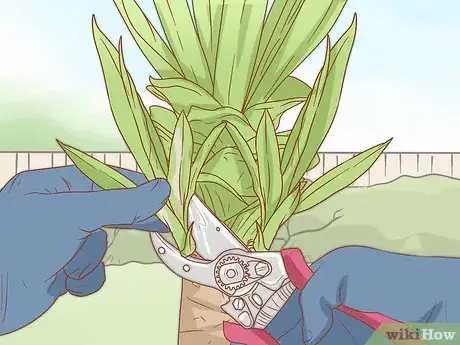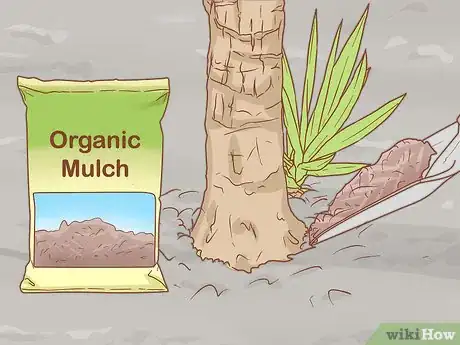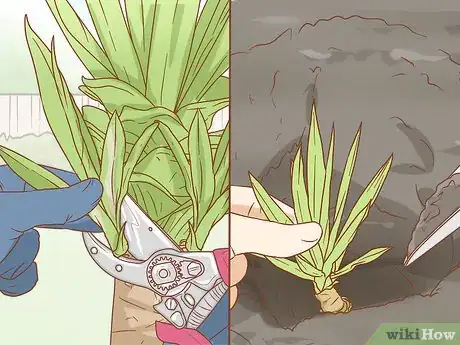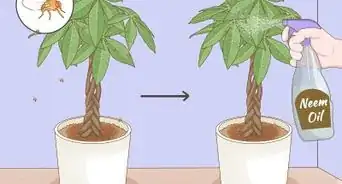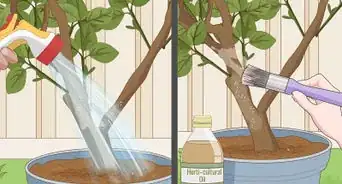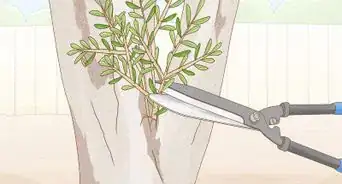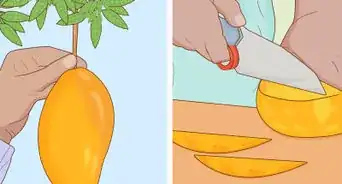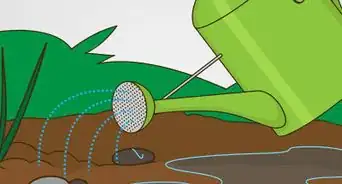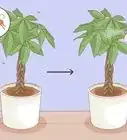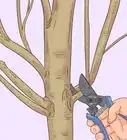This article was co-authored by Andrew Carberry, MPH. Andrew Carberry is a Food Systems Expert and the Senior Program Associate at the Wallace Centere at Winrock International in Little Rock, Arkansas. He has worked in food systems since 2008 and has experience working on farm-to-school projects, food safety programs, and working with local and state coalitions in Arkansas. He is a graduate of the College of William and Mary and holds a Masters degree in public health and nutrition from the University of Tennessee.
There are 9 references cited in this article, which can be found at the bottom of the page.
wikiHow marks an article as reader-approved once it receives enough positive feedback. In this case, 93% of readers who voted found the article helpful, earning it our reader-approved status.
This article has been viewed 294,710 times.
The yucca plant is a tough perennial succulent that can grow as a shrub or a tree, depending on the species. While the many species of yucca vary in size and color, they are all able to thrive in hot, dry climates and can be cared for in the same way. The plants often are started from cuttings, although growing yucca from seeds is possible. The easiest propagation method involves division of an already mature plant. Once started, yucca plants can be grown in pots or planted in the ground outdoors – either directly in your garden or in a specially-prepared raised bed.
Steps
Growing Yucca from Seeds
-
1Expect the plant to take several months to sprout. Yucca seeds are slow to germinate, and many species have a low success rate sprouting at all. The seed may even take a full year after planting to sprout.
- For a quicker process, take a cutting from an existing adult yucca plant. This method is described in the next section.
-
2Start this process in winter or early spring. Yucca seeds planted indoors should be started in winter, to give them as long as possible to germinate before the next winter begins. Planting directly in garden soil is not as effective. If planting directly in garden soil, plant in early spring.[1]Advertisement
-
3Place the seeds on a moist paper towel in a plastic container. Fill a container with approximately 1/4 inch (6 mm) of water. Place a paper towel on top of the water, then place your seeds on top of the paper towel.[2] This method increases the odds of the seeds surviving and germinating. Planting the yucca seeds directly in soil has a very low success rate.
-
4Keep the seeds moist at 65–75ºF (18–24ºC). Keep the container at room temperature, adding a small amount of water periodically to prevent the seeds from drying out and going dormant again.
-
5Once the seeds finally sprout, prepare a special potting mix. Some of the seeds should eventually sprout, but this can take anywhere from one month to a full year. Once the seeds have opened up and begun to sprout, prepare individual, small pots with a mixture of equal parts sand and compost.[3] If these materials are not available, use any well-draining soil mixture, typically with 30% or more sand or small gravel.
-
6Plant the seeds 1/2 inch (1.25 cm) deep and water in. Plant the sprouted seeds, sprouting side up, 1/2 inch (1.25 cm) under the soil's surface. Cover it with soil and water the soil thoroughly.
-
7Keep the sprouts in indirect sunlight and water occasionally. Let the first thorough watering almost dry out, then water regularly to keep the soil damp, but not soaked. You should see the sprouts emerge from the soil within a week.
-
8Keep indoors at least two years, transferring to larger pots successively. The yucca plant may not be sturdy enough to thrive outdoors for at least two or three years. Keep it indoors during this period, or indefinitely. Transplant the yuccas to a larger pot if its roots begin to wrap around the outside of its current pot. Once the yucca plant is two or three years old, you may plant it outside in the springtime, following the instructions in the planting outside section.
- When transplanting, be careful to dig deep enough to expose its entire taproot. This central, long root can be quite long in some yucca species.
Taking the Cutting
-
1Take a cutting from a mature stem. After a couple years of growth or more, yucca plants may produce offshoots near the base that grow on their own stem. During the dormant colder season, select a stem with dark brown bark, not a young, cream-colored stem.[4] Cut a section off of this stem.
- The length and thickness of the cutting do not matter much. A cutting 3–4 in. (7.5–10 cm) long should be sufficient.
-
2Strip the lower leaves from the stem. Use a clean knife or scissors to remove the leaves nearest the base, leaving the leaves on the top. With fewer leaves, the cutting will go through less severe moisture changes, which increases the odds of it surviving the transplant until its roots can grow.
-
3Dry out the stem. Place the cutting in a cool, shaded area. This dries the plant out slightly to encourage root growth for seeking moisture. After 4–7 days, the cutting should be ready to plant.
-
4Fill a small pot with loose soil. Select a pot with drainage holes. Fill it with a cactus or yucca potting mix, or make your own quickly draining soil. Two parts seed-starting mix and one part sand will provide nutrients for the young plant without keeping it too wet.[5]
- Do not use beach sand, as it contains high salt content. Sand from stream banks is usually acceptable.
- If you would like, you can dip the end of the stem in a rooting hormone or a homemade root stimulant at this point. This is not a necessary step, but it may encourage growth.
-
5Push the stem into the soil. Only push the stem far enough into the soil to keep it steady and upright. Often, you'll need to use a gentle rope or other soft line material to anchor the stem upright to another object.
-
6Keep the plant indoors in indirect sunlight. Start the plant indoors to protect it from chilly evening temperatures and from sudden gusts of wind. Keep it near a sunny window, but not in direct sunlight while its roots and leaves are still developing.
-
7Transfer the yucca plant to your garden after roots develop. Roots should develop fully within six weeks.[6] You may be able to see them peeking out of the drainage holes, but if the plant appears healthy, you can assume the roots have grown.
- If the roots fail to develop, you may wish to try again with a cutting from a larger, more mature yucca plant.
Producing a Yucca Plant through Division
-
1Select a side shoot. This method requires an already mature yucca plant. Find one that already has several side shoots. Choose one shoot that you would like to grow your new plant from.
-
2Dig a perimeter. With your shovel, loosen the soil around the plant. Dig in a circle around the plant about five inches outside of the shoot. Do not worry if you cut through roots.[7]
-
3Remove the plant. As you dig, you can start lifting up the plant from below with your shovel. Lift the plant until you are able to remove the whole shoot and the root ball from the ground.[8]
-
4Plant outdoors. Once you have removed the root ball, you can transplant the shoot to another location. Follow the same instructions and guidelines for planting the yucca plant outdoors.
Planting a Yucca Plant Outdoors
-
1Make sure your yucca plant can survive your climate. The acceptable USDA Hardiness Zones for yucca range depending on species, from zones 4 through 11 (minimum winter temperatures of -30 to +25ºF or -34 to -4ºC), depending on your species. Zones 9 through 11 (17 to 25ºF, -7 to -4ºC) are typically safe even if you do not know your exact yucca species.[9] If you live in a lower or higher zone, it's best to consult an experienced gardener or garden nursery employee to identify your yucca species and find out what zones it will thrive in.
-
2Plant your yucca during the late spring. Yucca plants thrive during the warm summer months. Planting the yucca at the beginning of the warm weather season gives it the longest growing season possible.
-
3Choose a location that receives full sun. Yucca plants need a hot, dry environment, so give your plant access to direct sunlight. Certain yucca species can thrive in colder or shadier locations, but these are in the minority, and typically still do well in full sunlight.
- If the plant was kept in a shady location, consider moving the pot to an area of indirect sunlight for a week before moving it into full sun. This gives it time to adjust, reducing the chance of burning or withering.
-
4Prepare the right soil. The yucca plant should be placed in a soil mix that is 50% sand or gravel and 50% soil. You should make sure that there is neither too much gravel nor too much soil.
-
5Form a raised bed over the stones (optional). If you built a stone bed, build a wooden wall around the location the yucca will be planted in to hold in the soil that will form a raised bed above the stones. Nail four 3 feet (0.9 m). by 1 foot (0.3 m). (1 m by 30 cm) boards into a square frame to place around the stone bed. You may wish to tilt the bed facing toward a sunny direction. (Tilt south in the northern hemisphere, north in the southern hemisphere.)
- Alternatively, tightly pack one or two dozen large stones that measure about 1 foot (0.3 m). (30.5 cm) in height around the stone bed to form a wall. This is more labor-intensive, but may provide additional drainage.
-
6Prepare the soil. Yucca needs a fast-draining soil to prevent root rot. Use a special yucca or cactus potting mix, or mix your own with three parts lightweight clay, four parts sand, and one part ordinary soil.[10] If you prepared a raised bed, this soil is placed within the boards or stone wall. Otherwise, simply have this soil ready for later.
-
7Dig a hole for the yucca. The hole should be twice as wide and twice as deep as the yucca's root ball. Slightly larger than the current pot the yucca is kept in should be enough if you are not sure how big the root ball is.
-
8Place the yucca in the hole with the prepared soil around it. Gently pry the yucca out of its pot. Turn the pot on its side. Grab the yucca at the base of the stem and slowly "wiggle" it out, soil, roots, and all. Place the yucca into the newly dug hole. Fill the rest of the hole with your soil mix and pack the soil around the base of the stem to hold the plant in place. The roots should not show above ground.
-
9Top the soil with 2 inches (5 cm) of granite chippings. The chippings keep the root dry at the neck by preventing water from splashing onto it accidentally.
Care
-
1Fertilize rarely. Use a water-soluble, potassium rich fertilizer, diluted to a ratio of about one part fertilizer to four parts water. Apply it once a month during the summer months, during the morning. Fertilize yucca zero to two times during the entire cool season (autumn through winter).
- Only fertilize more quickly if your yucca is a fast-growing species. Most yucca species are slow-growing and can be harmed by excess fertilizer. Similarly, if you miss a monthly fertilization in the summer, it is not a big deal. The plant will likely still grow.
- Some recommend only fertilizing yucca once a year. This is because yucca can survive well in areas with low nutrients.[11]
-
2Water sparingly. Many yucca plants can get by without any supplementary watering, relying solely on rainwater to survive. Once foliage starts to develop in the warm months, however, you can water it weekly, giving the plant just enough water to slightly moisten the soil without making it wet to the touch.[12]
- Reduce the frequency of watering if your yucca plant develops brown tips with yellow rings around them. This is a sign of over-watering.
-
3Check your plant for pests. Not many pests are drawn to yucca, but snails and slugs will attack new growth. Use a standard pesticide or organic pesticide to get rid of them. Small, green aphids can be washed off with soapy water.
-
4Monitor the plant for signs of fungal disease. Rust and mildew are the most common diseases. Spraying a fungicide may help rid the plant of disease, especially if it is only mildew, but a fungicide may or may not work against rust.
-
5Prune the plant when necessary. Some yucca grow in a rosette shape, and produce a long, central flower stalk. After it dies, this stalk should be cut back all the way to the base to prevent rot. Other yucca varieties are tall and tree-like. These may be pruned to direct growth, but always wear gloves and safety goggles, as yucca can send sharp splinters flying when cut.[13] In either type, cut off dead or withered leaves from the base of the plant whenever you see them.
-
6Add a layer of mulch over the bed each winter. Yucca plants can be damaged if exposed directly to frost. Spreading a thick layer of mulch can go a long way in keeping the plant warm and dry. However, keep mulch away from the lowest leaves to prevent rot.[14]
- You can also protect the plant by placing a solid sheet of glass or plexiglass over the bed instead of mulch.
-
7Divide the plant. If the Yucca grows too thick and dense after a few years, you can take a shoot from it to plant elsewhere. Choose an offshoot you would like to remove, dig a perimeter around it, and lift the shoot from below with a shovel. You can cut any roots to the mother plant. Transplant this shoot to a new sunny area. This is best done during the dormant season.
Expert Q&A
Did you know you can get expert answers for this article?
Unlock expert answers by supporting wikiHow
-
QuestionI have a yucca root in water - will it grow?
 Andrew Carberry, MPHAndrew Carberry is a Food Systems Expert and the Senior Program Associate at the Wallace Centere at Winrock International in Little Rock, Arkansas. He has worked in food systems since 2008 and has experience working on farm-to-school projects, food safety programs, and working with local and state coalitions in Arkansas. He is a graduate of the College of William and Mary and holds a Masters degree in public health and nutrition from the University of Tennessee.
Andrew Carberry, MPHAndrew Carberry is a Food Systems Expert and the Senior Program Associate at the Wallace Centere at Winrock International in Little Rock, Arkansas. He has worked in food systems since 2008 and has experience working on farm-to-school projects, food safety programs, and working with local and state coalitions in Arkansas. He is a graduate of the College of William and Mary and holds a Masters degree in public health and nutrition from the University of Tennessee.
Food Systems Expert
-
QuestionMost of my yucca seeds look like the center has been removed - are insects to blame?
 Andrew Carberry, MPHAndrew Carberry is a Food Systems Expert and the Senior Program Associate at the Wallace Centere at Winrock International in Little Rock, Arkansas. He has worked in food systems since 2008 and has experience working on farm-to-school projects, food safety programs, and working with local and state coalitions in Arkansas. He is a graduate of the College of William and Mary and holds a Masters degree in public health and nutrition from the University of Tennessee.
Andrew Carberry, MPHAndrew Carberry is a Food Systems Expert and the Senior Program Associate at the Wallace Centere at Winrock International in Little Rock, Arkansas. He has worked in food systems since 2008 and has experience working on farm-to-school projects, food safety programs, and working with local and state coalitions in Arkansas. He is a graduate of the College of William and Mary and holds a Masters degree in public health and nutrition from the University of Tennessee.
Food Systems Expert
-
QuestionIt has been two weeks since I cut off the yuccas to be replanted. Will they still grow?
 Alex MoyersCommunity AnswerMost likely. As stated above, the germination period for yuccas is extensive.
Alex MoyersCommunity AnswerMost likely. As stated above, the germination period for yuccas is extensive.
Things You’ll Need
- Sharp knife or scissors
- Small pot
- Large stones or wooden boards (optional)
- Gravel
- Granite stones
- Loose, dry soil
- Small shovel
- Fertilizer
- Pesticide
- Fungicide
- Watering can
- Mulch
- Glass sheet
References
- ↑ http://www.gardenershq.com/Yucca-plant.php
- ↑ http://www.weekendgardener.net/perennial-flowers/yucca.plant.htm
- ↑ http://www.weekendgardener.net/perennial-flowers/yucca.plant.htm
- ↑ http://www.burkesbackyard.com.au/factsheets/Gardening-Tips-Books-Techniques-and-Tools/Yucca-Cutting/2959
- ↑ http://www.burkesbackyard.com.au/factsheets/Gardening-Tips-Books-Techniques-and-Tools/Yucca-Cutting/2959
- ↑ http://dotpointing.com.au/growing-yuccas/
- ↑ http://www.weekendgardener.net/perennial-flowers/yucca.plant.htm
- ↑ http://www.weekendgardener.net/perennial-flowers/yucca.plant.htm
- ↑ http://davesgarden.com/guides/articles/view/2383/
About This Article
To grow yucca, start by finding a healthy shoot on a mature yucca plant. Then, dig in a circle around the plant about 5 inches outside of the shoot, and as you dig, start lifting up the plant until you can remove the whole shoot and root ball from the ground. Next, transplant the shoot to another location outdoors where it will get plenty of sun. Water your plant weekly, but only enough to slightly moisten the soil, and routinely prune off withered leaves to care for your plant. For more guidance from our Gardener reviewer, including how to grow yucca from seeds, keep reading!
